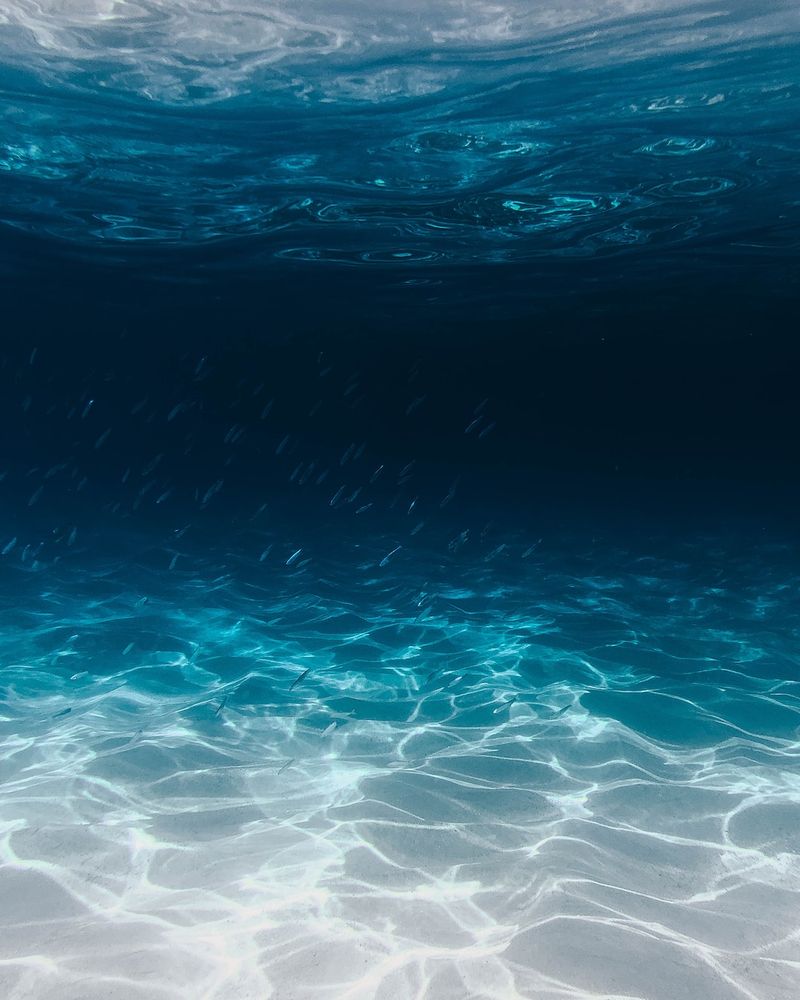Oceans See How Crushing Pressures Increase in the Ocean’s Depths
Search Continues for Missing Titan Submersible
Last Sunday, the Titan submersible went missing during a dive to the shipwrecked remains of the Titanic. Efforts to locate the craft have been ongoing, with search-and-rescue teams focusing on underwater banging noises detected by sonar buoys. However, the submersible remains elusive, and the search area has expanded to cover 10,000 square miles of ocean. One of the greatest dangers the Titan may face if stranded at lower depths is the increasing water pressure.
The Effects of Pressure in the Ocean’s Depths
As one descends into the ocean, the pressure increases due to the weight of the water above. At sea level, the pressure is equivalent to one atmosphere, which is approximately 15 pounds per square inch (psi). For every 33 feet (10 meters) of saltwater depth, pressure increases by another atmosphere. This increasing pressure poses significant challenges for any objects or vehicles in the ocean’s depths.
Different Zones and Life in the Ocean
Scientists have categorized the ocean’s depths into various zones based on light and pressure, and each zone determines the type of life that can survive there. The top layer, known as the epipelagic or sunlight zone, sees strong light and relatively low pressure, allowing for a variety of plants and animals to thrive. However, sunlight can only penetrate up to a depth of 656 feet, where the pressure is about 21 atmospheres.
The Challenge of Reaching the Titanic
To reach the remains of the Titanic, which sits 12,400 feet below the ocean’s surface in the bathypelagic or midnight zone, vessels must go much deeper. The pressure around the sunken ship is approximately 375 atmospheres, equivalent to 5,500 pounds of force on every square inch of an object’s surface. This force surpasses the bite pressure of some of the strongest jaws in the animal kingdom, such as crocodiles and great white sharks.
The Importance of Submersible Design and Technology
For submersibles to withstand the immense pressure of the ocean’s depths, they must be built with strong materials and have a shape that can endure the water pressing in from all sides. Many deep-sea submersibles are spherical to cope with this pressure, while the missing Titan is cylindrical, potentially making its survival more challenging. Additionally, submersibles require essential features such as oxygen supply, carbon dioxide scrubbers, heating systems, and sensing and navigation systems to guide them to their destinations and safely return to the surface.
Editorial: The Perils and Rewards of Deep-Sea Exploration
The search for the missing Titan submersible highlights the perils inherent in deep-sea exploration. The crushing pressures exerted at lower depths pose a significant threat to both human-operated vehicles and their occupants. As we push the boundaries of our understanding by exploring the depths of the ocean, we must do so with caution and take into account the inherent risks involved.
However, the rewards of deep-sea exploration are equally remarkable. Through these endeavors, we have gained invaluable insights into the planet’s biodiversity and ecosystems, and important discoveries have been made that contribute to our scientific knowledge. The remains of the Titanic itself have provided a window into history, offering a deeper understanding of the past and the human stories entwined with it.
It is crucial that we learn from the challenges faced during the search for the Titan submersible. These experiences should inform future expeditions, ensuring that safety measures and technological advancements continue to evolve to mitigate risks. The pursuit of knowledge and discovery in the deep-sea realm must be balanced with the safety and well-being of those involved.
Advice: Exploring the Depths Safely and Responsibly
For any future deep-sea exploration endeavors, it is imperative to prioritize safety and responsibility. Here are some key considerations:
1. Robust Equipment and Design:
Develop and utilize submersibles that are specifically designed to withstand the extreme pressures of the ocean’s depths. Incorporate materials and shapes that can withstand the forces exerted from all sides, ensuring the safety of occupants and the integrity of the vehicles.
2. Comprehensive Training and Preparedness:
Equip crew members with extensive training and knowledge of deep-sea conditions, potential risks, and emergency protocols. Adequate preparation is vital to ensure quick and effective responses to unforeseen circumstances.
3. Risk Mitigation Strategies:
Develop and implement strategies to minimize risks associated with deep-sea exploration. This includes thorough risk assessments, contingency plans, and regular evaluations of equipment and procedures.
4. Collaboration and Knowledge Sharing:
Encourage collaboration among scientific institutions, experts, and explorers, fostering an environment in which knowledge and experiences can be shared and utilized to enhance safety and exploration capabilities. Learning from one another’s successes and challenges is vital for progress.
5. Ethical Considerations:
Deep-sea exploration should be conducted with a strong sense of ethics and environmental responsibility. Ensure that research and exploration activities have minimal impact on delicate marine ecosystems and respect the natural environments being explored.
6. Sustainable Funding and Support:
Invest in sustainable funding and support for deep-sea exploration, ensuring that resources are allocated to both safety measures and scientific advancements. This will enable ongoing research and discoveries while prioritizing the well-being of those involved.
By approaching deep-sea exploration with a thoughtful and comprehensive mindset, we can continue to uncover the mysteries of the deep ocean while safeguarding the lives of those who dare to explore its depths.

<< photo by Silas Baisch >>
The image is for illustrative purposes only and does not depict the actual situation.




